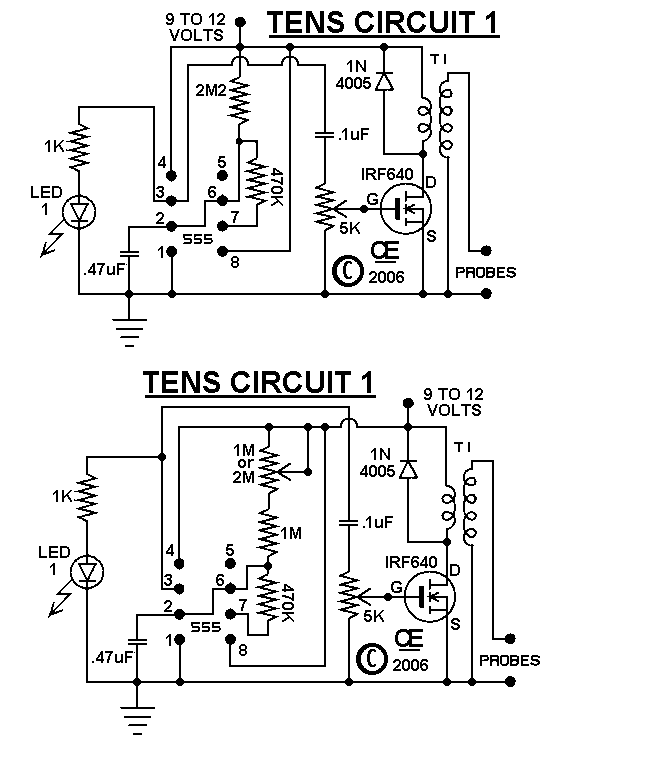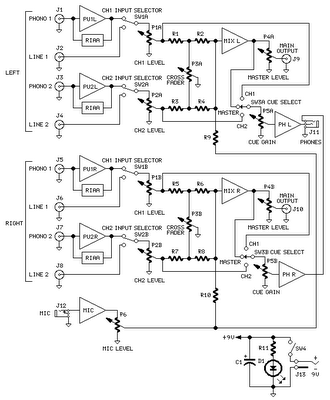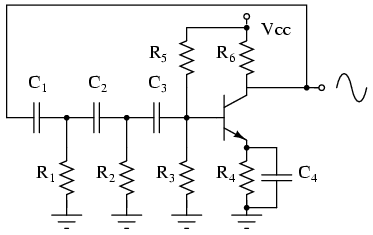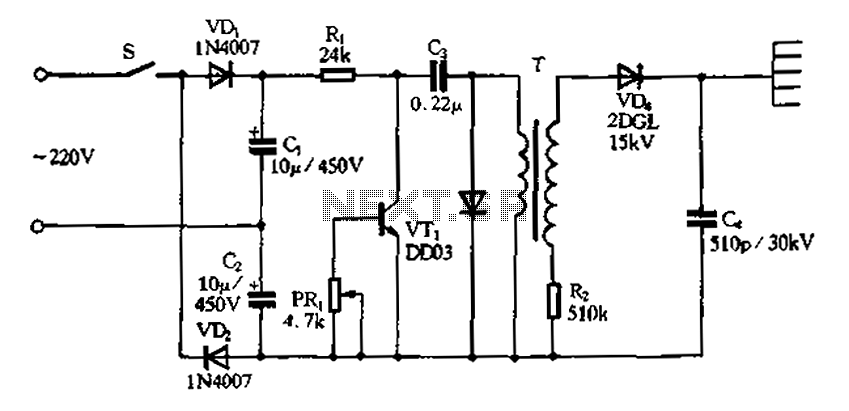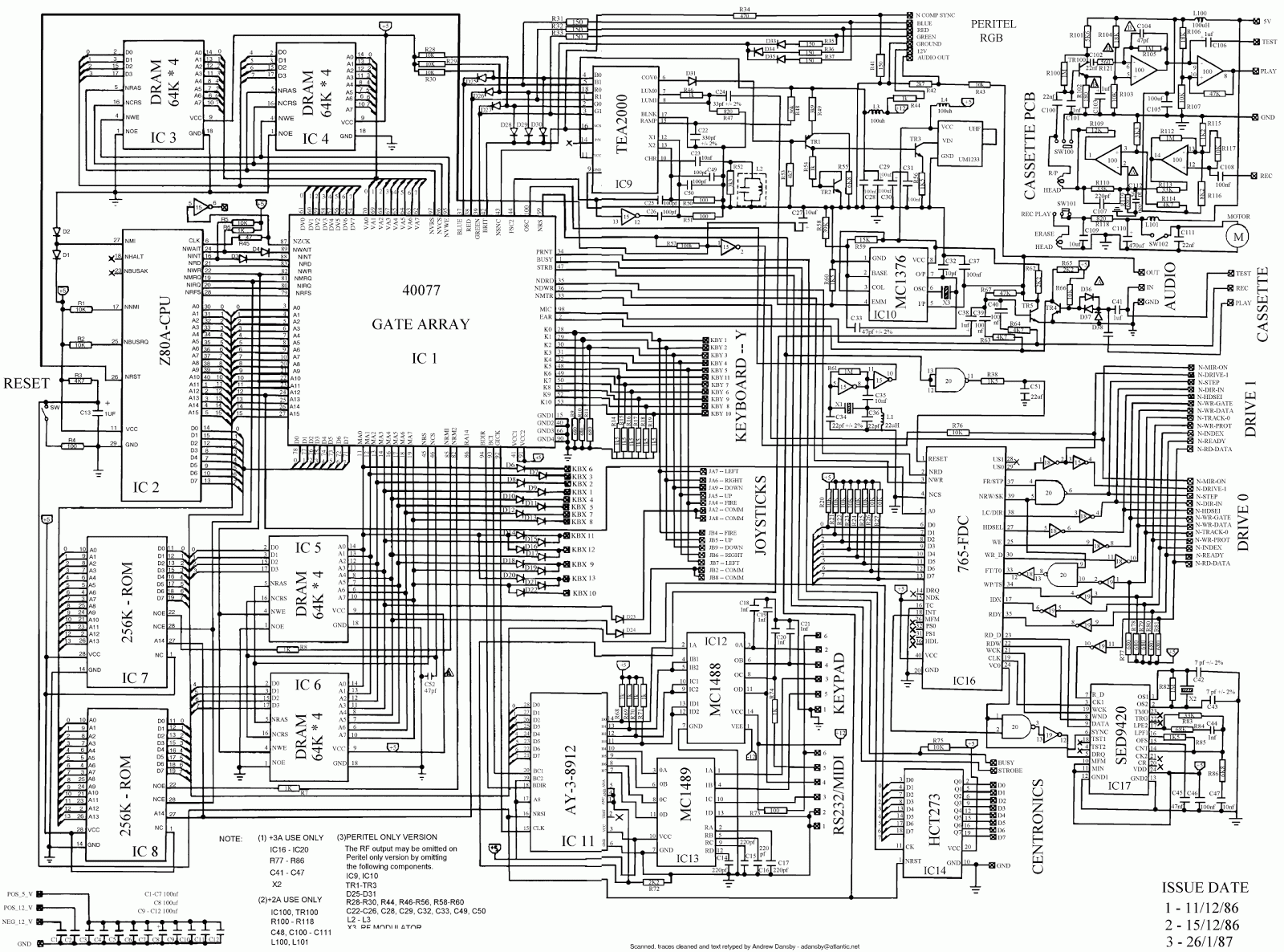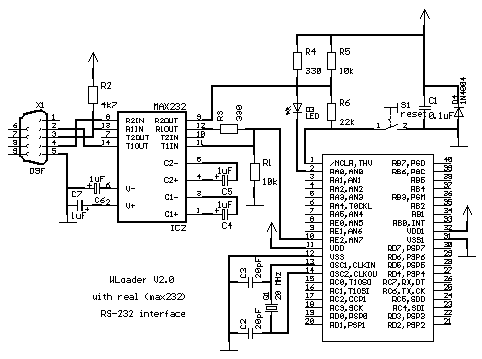
ic lm338 application circuits explained
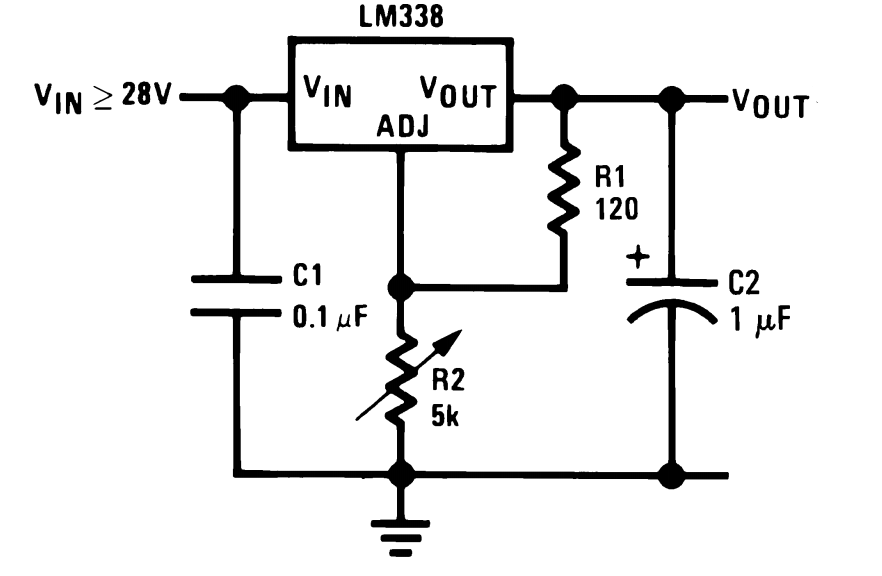
The LM338 integrated circuit (IC) from Texas Instruments is a versatile component that can be configured in various ways to create high-quality power supply circuits. The first circuit demonstrates the typical wiring format around the IC, providing an adjustable output voltage ranging from 1.25V to the maximum applied input voltage, which should not exceed 35 volts. This configuration produces an output that can match the input supply voltage, while the current is well regulated and cannot exceed 5 Amps. Resistor R1 is carefully selected to maintain a safe maximum current limit of 5 Amps that can be drawn from the circuit. Although the LM338 is rated for a maximum current of 5 Amps, it can be modified to handle higher currents, up to 15 Amps, with appropriate modifications as described below. The circuit employs three LM338 ICs for the intended implementations, with adjustable output voltage as explained in the first circuit. Resistor R8 is utilized for voltage adjustment. In the designs mentioned, the power supply uses a potentiometer for voltage adjustment, while the subsequent design incorporates discrete transistors that can be triggered separately to achieve the relevant output voltage levels. The collector resistance values are incrementally chosen to allow for varying voltages to be selected and made available through external triggers. Besides power supplies, the LM338 can also function as a light controller. This circuit features a simple design where a phototransistor replaces the resistor typically used for output voltage adjustment. The light to be controlled is powered by the output of the IC, and its illumination affects the phototransistor. As light intensity increases, the resistance of the phototransistor decreases, pulling the ADJ pin of the IC closer to ground, which reduces the output voltage and consequently the light output, maintaining a consistent glow of the lamp. The next circuit illustrates a straightforward wiring setup with the LM338, where the ADJ pin is connected to the output after a current sensing preset. The preset value determines the maximum allowable current through the IC at the output. This circuit can safely charge a 12-volt lead-acid battery, with resistor Rs selected to determine the desired charging current. Resistor R2 can be adjusted to obtain different voltages for charging other types of batteries. Some sensitive electronic circuits require a gradual startup instead of an immediate one. The addition of capacitor C1 ensures that the output voltage rises gradually to the set maximum level, providing safety to the connected circuit. The LM338 can also be configured to control the temperature of specific parameters, such as a heater. In this case, another important IC, the LM334, serves as a sensor connected across the ADJ and ground of the LM338. If the temperature from the heat source exceeds a predetermined threshold, the sensor decreases its resistance, causing the output voltage of the LM338 to drop, which subsequently reduces the voltage supplied to the heating element. The following circuit demonstrates a configuration that restricts current to 10 Amps, making it suitable for high-current rated loads, with adjustable voltage via potentiometer R2. This configuration allows multiple LM338 power supply modules to be controlled simultaneously through a single potentiometer.
The LM338 is a popular choice for adjustable linear voltage regulators due to its robust performance characteristics and ease of use. Its ability to provide a stable output voltage over a wide range of input voltages makes it suitable for various applications, including power supplies for sensitive electronics, battery chargers, and temperature control systems. When designing circuits with the LM338, it is essential to consider thermal management, especially when operating at or near its maximum current rating. Adequate heat sinking may be required to prevent thermal shutdown, ensuring reliable operation under load. The use of bypass capacitors at the input and output terminals is also recommended to improve transient response and stability. Overall, the LM338 is a versatile and reliable component that can be adapted to meet the needs of various electronic projects.The IC LM338 by TEXAS INSTRUMENTS, is a versatile IC which can be wired in numerous different ways for obtaining high quality power supply circuit configuartions. The first circuit shows the typical wiring format done around the IC. The circuit provides an adjustable output right from 1. 25V to the maximum applied input voltage which shouldn`t be more than 35 vots. This circuit produces an output that may be equal to the input supply voltage but the current is well regulated and can never exceed the 5 Amp mark. R1 is precisely selected so as to maintain a safe 5 amp maximum current limit that canbewithdrawn from the circuit.
The IC LM 338 alone is specified for handling a maximum of 5 Amp of current, however if the IC is needed to handle higher currents, in the region of 15 amps, it can well be modified to produce that much of current with the appropriate modifications as shown below. The circuitutilizesthree IC LM338 for the intended implementations with output voltage that`s adjustable as explained for the first circuit.
R8 is used for the voltage adjustment operations. In the above designs, the power supply utilized a pot for implementing the voltage adjustment procedure, the below given designincorporatesdiscrete transistors which can be digitally triggered separately for obtaining therelevantvoltage levels at the outputs. The collector resistance values are chosen in anincremental order so that a correspondingly varying voltages can be selected and becomes available through the external triggers.
Other than power supplies, LM338 can also be used as a light controller. Thecircuitshows a very simple design where a phototransistor replaces the resistor which normally acts as thecomponentfor adjusting the output voltage. The light which needs to be controlled is powered by the output of the IC and its light is allowed to fall on this phototransistor.
As the light increases the value of thephoto-transistordecreases which in turn pulls the ADJ pin of the IC more toward the ground, forcing the output voltage to decrease which also decreases the light illumination, maintaining a constant glow on the lamp. The next circuit shows a super simple wiring with the IC LM338 whose ADJ pin is connected to the output after a current sensing preset.
The value of the preset determines the maximum amount of current that becomes permissible through the IC at the output. The circuit below can be used to charge a 12 volt lead acid battery safely. The resistor Rs may be selected appropriately for determining the desired level of current for the connected battery.
R2 can be adjusted for obtaining other voltages for charging other categories of batteris. Some sensitive electronic circuits require a slow start rather than the usual instant start. The inclusion of C1 makes it sure that the output from the circuit rises gradually to the set maximum level ensuring the intended safety to the connected circuit. IC LM338 can also be configured for controlling temperature of a certain parameter like a heater. Another important IC LM334 is used as the sensor which is connected across the ADJ and ground of the IC LM338.
If the heat from the source tends to increase above the predeterminedthreshold, the sensor lowers its resistance correspondingly, forcing the outputvoltage of LM338to fall, subsequently decreasing the voltage to the heaterelement. The following circuit shows another circuitwhosecurrent is restricted to 10 amps, that means the output can be made suitable for high current rated loads, the voltage is adjustable as usual via the pot R2.
The given circuit shows a simpleconfigurationwhich can be used for controlling the outputs of many LM338 power supply modules simultaneously though a single pot. 🔗 External reference
The LM338 is a popular choice for adjustable linear voltage regulators due to its robust performance characteristics and ease of use. Its ability to provide a stable output voltage over a wide range of input voltages makes it suitable for various applications, including power supplies for sensitive electronics, battery chargers, and temperature control systems. When designing circuits with the LM338, it is essential to consider thermal management, especially when operating at or near its maximum current rating. Adequate heat sinking may be required to prevent thermal shutdown, ensuring reliable operation under load. The use of bypass capacitors at the input and output terminals is also recommended to improve transient response and stability. Overall, the LM338 is a versatile and reliable component that can be adapted to meet the needs of various electronic projects.The IC LM338 by TEXAS INSTRUMENTS, is a versatile IC which can be wired in numerous different ways for obtaining high quality power supply circuit configuartions. The first circuit shows the typical wiring format done around the IC. The circuit provides an adjustable output right from 1. 25V to the maximum applied input voltage which shouldn`t be more than 35 vots. This circuit produces an output that may be equal to the input supply voltage but the current is well regulated and can never exceed the 5 Amp mark. R1 is precisely selected so as to maintain a safe 5 amp maximum current limit that canbewithdrawn from the circuit.
The IC LM 338 alone is specified for handling a maximum of 5 Amp of current, however if the IC is needed to handle higher currents, in the region of 15 amps, it can well be modified to produce that much of current with the appropriate modifications as shown below. The circuitutilizesthree IC LM338 for the intended implementations with output voltage that`s adjustable as explained for the first circuit.
R8 is used for the voltage adjustment operations. In the above designs, the power supply utilized a pot for implementing the voltage adjustment procedure, the below given designincorporatesdiscrete transistors which can be digitally triggered separately for obtaining therelevantvoltage levels at the outputs. The collector resistance values are chosen in anincremental order so that a correspondingly varying voltages can be selected and becomes available through the external triggers.
Other than power supplies, LM338 can also be used as a light controller. Thecircuitshows a very simple design where a phototransistor replaces the resistor which normally acts as thecomponentfor adjusting the output voltage. The light which needs to be controlled is powered by the output of the IC and its light is allowed to fall on this phototransistor.
As the light increases the value of thephoto-transistordecreases which in turn pulls the ADJ pin of the IC more toward the ground, forcing the output voltage to decrease which also decreases the light illumination, maintaining a constant glow on the lamp. The next circuit shows a super simple wiring with the IC LM338 whose ADJ pin is connected to the output after a current sensing preset.
The value of the preset determines the maximum amount of current that becomes permissible through the IC at the output. The circuit below can be used to charge a 12 volt lead acid battery safely. The resistor Rs may be selected appropriately for determining the desired level of current for the connected battery.
R2 can be adjusted for obtaining other voltages for charging other categories of batteris. Some sensitive electronic circuits require a slow start rather than the usual instant start. The inclusion of C1 makes it sure that the output from the circuit rises gradually to the set maximum level ensuring the intended safety to the connected circuit. IC LM338 can also be configured for controlling temperature of a certain parameter like a heater. Another important IC LM334 is used as the sensor which is connected across the ADJ and ground of the IC LM338.
If the heat from the source tends to increase above the predeterminedthreshold, the sensor lowers its resistance correspondingly, forcing the outputvoltage of LM338to fall, subsequently decreasing the voltage to the heaterelement. The following circuit shows another circuitwhosecurrent is restricted to 10 amps, that means the output can be made suitable for high current rated loads, the voltage is adjustable as usual via the pot R2.
The given circuit shows a simpleconfigurationwhich can be used for controlling the outputs of many LM338 power supply modules simultaneously though a single pot. 🔗 External reference
Warning: include(partials/cookie-banner.php): Failed to open stream: Permission denied in /var/www/html/nextgr/view-circuit.php on line 713
Warning: include(): Failed opening 'partials/cookie-banner.php' for inclusion (include_path='.:/usr/share/php') in /var/www/html/nextgr/view-circuit.php on line 713
